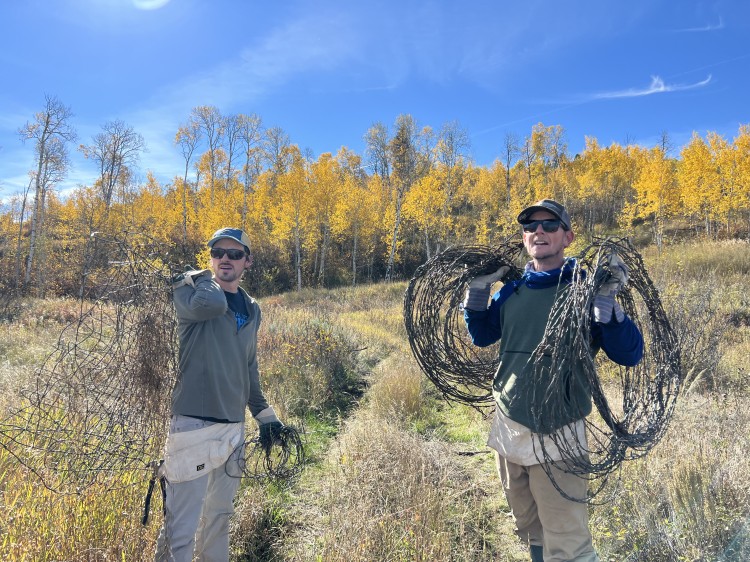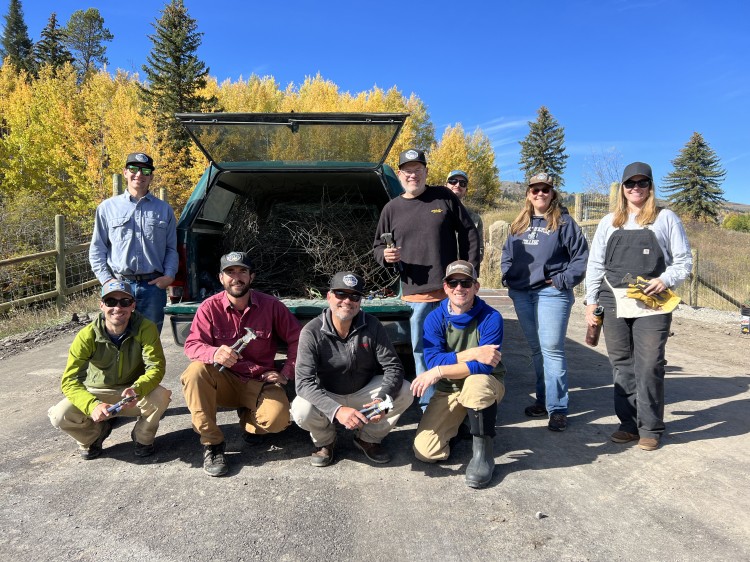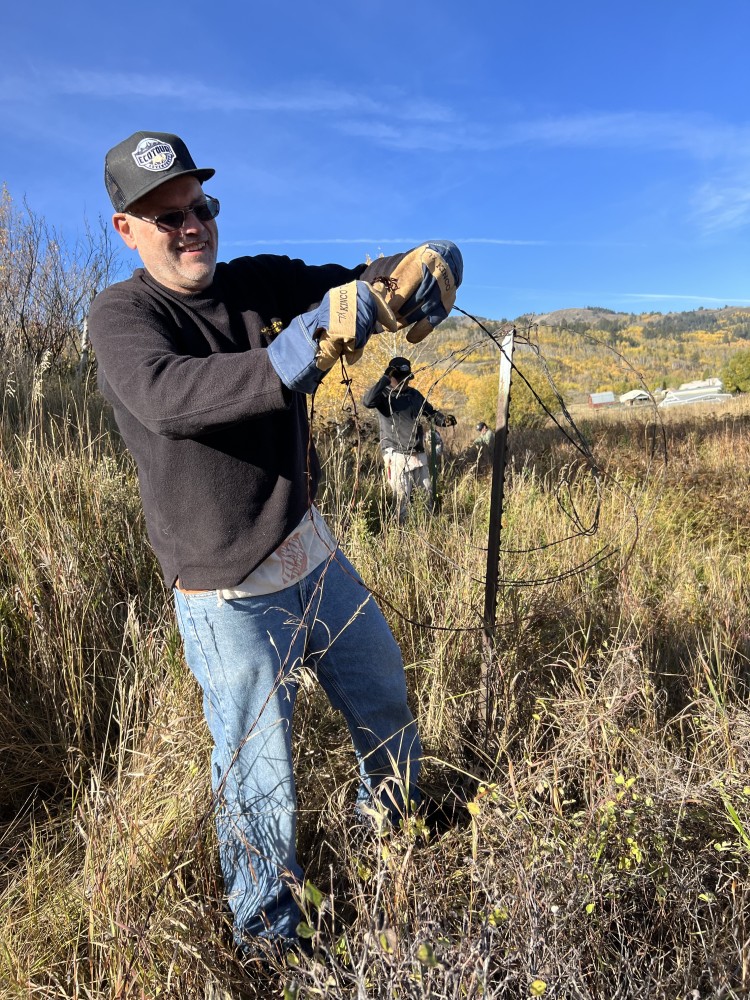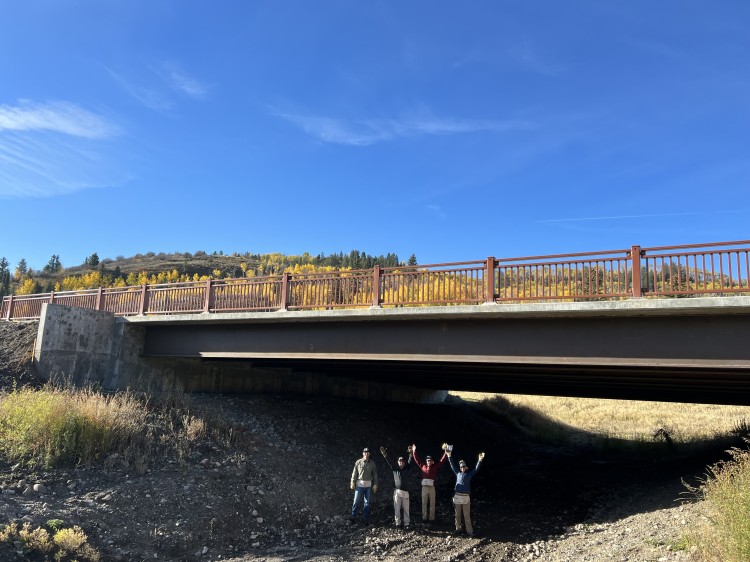Lending a Hand: Fence Removal to Benefit Wildlife


ETA guides Harlan Gough (left) and Ryan Kempfer (right) carry barbed wire fencing that was removed over the course of the day.
It was not your typical highway ‘clean up’. Instead of orange garbage bags, the volunteers were given pliers and wire cutters and told to take it all down. And that is exactly what the 10 EcoTour Adventures (ETA) employees did. The group of guides and staff, along with representatives from Teton County, WY and the Jackson Hole Wildlife Foundation (JHWF), recently spent several hours removing barbed wire fencing that posed a danger to wildlife along US Highway 89 south of Jackson. Outdated barbed wire fencing can be dangerous to wildlife, especially those that are nocturnal. Ungulates such as deer and elk can tangle themselves while jumping these hard-to-see obstacles, and birds such as sage grouse can die or wind up badly injured when they fly into the fencing. “We are fortunate to be in a position where we can help out the very asset we rely on for our tours,” said ETA owner Taylor Phillips. “This is a great way to give back.”

ETA staff smiling after a hard day's work!
The fence removal effort is part of a much larger and long-term improvement project on this stretch of road that has been a hotspot for Wildlife-Vehicle Collisions (WVCs) for years. Unfortunately, many of these collisions involve high numbers of moose, elk and deer, as well as small mammals. To decrease WVCs, wildlife-friendly fencing and crossing structures, including underpasses, have been installed over the past several years; the planning process for the work began way back in 2001.
While the $13 million project has been spearheaded and largely funded by the Wyoming Department of Transportation, a variety of local and state partners have been involved, including Teton County, Teton Conservation District, JHWF, Greater Yellowstone Coalition, the Wyoming Game and Fish Department, and the US Forest Service. The goal of the project is not only to keep humans and wildlife safe, but also to connect critical wildlife habitat including that on public land. Chris Colligan, Public Works Project Manager for Teton County, told ETA volunteers that their fence removal work would, in a small but important way, help “make the landscape more permeable” by allowing for the safe movement of wildlife and giving them better access to summer and winter range.

ETA staffer Walt Esquivel wrapping up a strand of barbed wire fencing.
Thus far, the fencing and crossing structures are working. Teton County Engineer Amy Ramage, who joined in the fence pulling, told the ETA group that significant reductions in roadkill have already been observed. Hopefully, their volunteer work will contribute to even more success. Kyle Kissock, communications manager at the JHWF, agreed with Ramage and said he was “happy to have people so eager to help'' make that happen. At the end of the day, ETA staff took down about a quarter mile of fence. We were happy to be involved and are excited to get out there again to do our part in sustaining the wild landscape that defines the Greater Yellowstone Ecosystem.

ETA staff standing at a wildlife crossing.
Written by ETA guide Drew Overholser.













